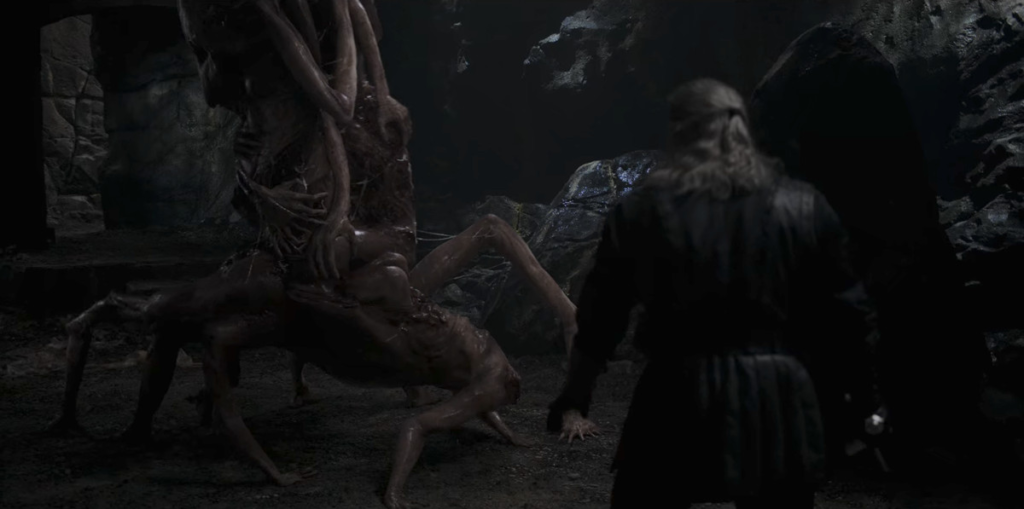In The Witcher season 3, Geralt (Henry Cavill) is facing down some demons, both literal and metaphorical. But none have been so tremendously challenging as the “flesh monster.”
He encounters it in some dungeon lair — one Geralt knows is a trap but, naturally, ventures into anyway. After all, the man, the myth, the Witcher has faced his share of beasties across hundreds of years, and always come out more or less unscathed. Still, he’s surprised when he encounters something he’s never seen before: a lumbering, Cronenbergian mass of arms coming at him from a cocoon in the corner. As he battles the monster, he quickly learns the monster is connected to a set of three human heads linked to the wall, who wail with every blow to the monster’s body.
It’s gnarly and great, one of the most effective scenes of the new season. It’s also what production designer Andrew Laws said was easily the hardest monster to create of the season, and possibly the hardest Witcher monster to date.
“We originally concepted it in very abstract ways,” Laws says. The issue was figuring out the nature of the flesh monster, which Laws says took place with “more esoteric discussions” to get to the heart of the issue: Does it have four legs? Two? Does it stand up or wave its arms? How does it look when it’s in a dormant state versus an active state? How does the flesh monster actually work?
It’s a process that Laws estimates took months to develop and reach a (mostly) finished product.
“We had to deal with the dynamism of it between prosthetics, creature concept design, VFX, and try to figure out how to evolve this thing and make sense out of it,” Laws says. “We also had to do stunts, that was a big part of it — how they wanted to deal with their movement. That one in particular, I’d say it was months.”
As they worked together, they developed a sense that the monster would be a hulking mass that would somewhat defy the framework of what a Witcher monster could look like.
“There was definitely a sense of the idea of how that monster comes together, and that maybe it’s not always together. And that it forms — depending on the level of conflict, it intensifies,” Laws says.
Ultimately, he thinks the flesh monster is a creature that could only have happened in season 3, once the crew had enough shorthand with each other to develop such a beguiling monster from an abstract description across so many different departments.
But it was absolutely crucial they get it right: The flesh monster is more than just a chance to level up conflict for Geralt, or another monstrosity for him to dispatch. It is a symptom of the true evil that Geralt and his family are up against, a horrific experiment that he has to get to the bottom of if he wants to save Ciri (Freya Allan). It’s the first sign of an evil he can barely wrap his mind around. No wonder it’s a massive fleshy behemoth.

